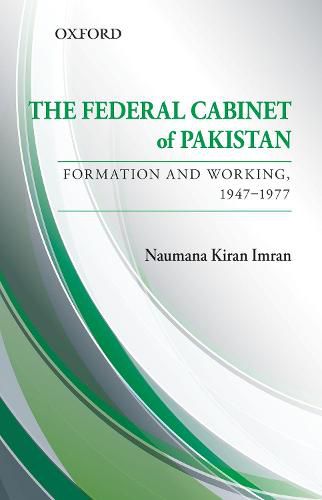Readings Newsletter
Become a Readings Member to make your shopping experience even easier.
Sign in or sign up for free!
You’re not far away from qualifying for FREE standard shipping within Australia
You’ve qualified for FREE standard shipping within Australia
The cart is loading…






This book explores the role of the Federal Cabinet of Pakistan in the decision-making and policy formulation processes from 1947 to 1977. It challenges the common perception that the Federal Cabinet was a voiceless institution, and only the military and civil bureaucracies played a pivotal role in the decision-making process. The book also highlights how all three institutions including the civil bureaucracy, the military bureaucracy, and the cabinet were effective besides a few prominent individuals, especially while dealing with political and economic matters.The book utilizes newly-declassified cabinet files, which include minutes of cabinet meetings, decisions taken by various cabinets, and the working papers and summaries presented to them by ministries on many important issues, to conclude that the role of the cabinet as an institution in strengthening democracy in the country was a mixed one. The cabinet strengthened democracy by allowing ministers, representing different shades of opinion and social groups, to share power by coming to a consensus on vital issues with the head of the government, but its undemocratic decisions such as the use of the military or dismissal of the provincial governments and governors weakened democracy.
$9.00 standard shipping within Australia
FREE standard shipping within Australia for orders over $100.00
Express & International shipping calculated at checkout
This book explores the role of the Federal Cabinet of Pakistan in the decision-making and policy formulation processes from 1947 to 1977. It challenges the common perception that the Federal Cabinet was a voiceless institution, and only the military and civil bureaucracies played a pivotal role in the decision-making process. The book also highlights how all three institutions including the civil bureaucracy, the military bureaucracy, and the cabinet were effective besides a few prominent individuals, especially while dealing with political and economic matters.The book utilizes newly-declassified cabinet files, which include minutes of cabinet meetings, decisions taken by various cabinets, and the working papers and summaries presented to them by ministries on many important issues, to conclude that the role of the cabinet as an institution in strengthening democracy in the country was a mixed one. The cabinet strengthened democracy by allowing ministers, representing different shades of opinion and social groups, to share power by coming to a consensus on vital issues with the head of the government, but its undemocratic decisions such as the use of the military or dismissal of the provincial governments and governors weakened democracy.